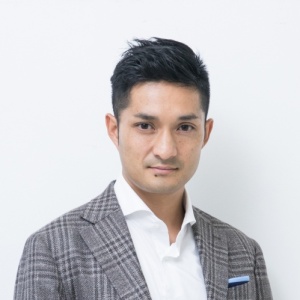Street Museum
Jurors

Dr. Apurba Kumer Poddar
Associate Professor, BUET
PhD(Cambridge), MaHS (Leuven), B.Arch (BUET)

Kazutaka Fujii
CEO at KAFA (Kazutaka Fujii Architects)
Tokyo, Japan
Winner
Hanwen Zhang
from The University of Hong Kong (HKU)
The project is located in Hong Kong, China where the streets are very narrow, but it is the space where we can discover the daily life of the city. The urban street interface in Hong Kong is diversified with its colorful façade. Every block is like a mini street museum where residents can enjoy the special cityscape. Scaffolding made of bamboo can be seen everywhere in Hong Kong streets. However, residents avoid this city view because there is some negative impact on people’s daily life such as obstructing traffic and affecting ventilation and lighting. “The Framework—Scaffolding Revolution” design proposal hopes this temporary structure can not only become a tool for building construction but also it can form a new public space to blur the relationship between people and the street. The street museum is using safety netting suspended on a frame of bamboo scaffolding. The gigantic technicolor sequence with multiple primary color layers overlaps to create a playful pavilion. The street line museum combines different types of functions such as art, reading, sculpture area, etc. It breaks the silence of the original block that offers a flexible and interactive street life for the Kennedy town district.
Text Description from Participants
Very strong proposal. The idea of turning something ordinary like scaffolding into an aesthetic element is very smart. This scaffolding street museum will merge into the daily life of Hong Kong as well as stand out from the cityscape. The structure is simple and elegant. Very talented.
Kazutaka Fujii
First Runner-Up
Israt Jahan Meghla &
Mashrufa Akter Risha
from Military Institute of Science & Technology
A place where they see the world very differently and attach and take different meanings and experiences from and to people, to forms, places and spaces. In our percipience, which street could be more performative, full of activities , eventful and historic than a street of old Dhaka? Any random street contains spicy street foods and tea stalls, colors , its own unique activities , may even one or two heritage structure with their own tarnishing stories of 400 years.We decided to go to the very beginning of the story. Sadarghat River Front, located in the southern part of Dhaka, on the river Buriganga, is one of the most dynamic places in Dhaka. The river side Ahsanullah Road and BK Dash road , where it all began. We chose the adjacent street of the iconic Ahsan Manzil and Ruplaal House as our area of intervention. We decided to turn it into the strips of graffiti which would be of Dhaka’s very own indigenous rickshaw art style. Its would be helpful this way to communicate with mass people this way in order to convey or raise awareness through the art. The graffiti bands lead to our rendezvous platforms by the river.
Text Description from Participants
Succussed to show live and rich activity happening on streets, and the graphics are very strong and appearing.
Kazutaka Fujii
Second Runner-Up
Joshua C. Delos Santos
from Technological Institute of the Philippines
"In the Philippines, there are 26.14 million Filipinos under the poverty line, an economic crisis, and social inequality problems. These problems exist in a community called the ""barangay,"" consisting of the upper class and the lower class, where socioeconomic inequalities are a cause for the decline of equal opportunities. Besides, inequality among the lower class is a problem of forgetting to experience a traditional museum to which the upper class has access. As a solution, selected barangays' streets were chosen as the venue to create a street museum showcasing Filipino street culture. The project aims to reimagine streets as interactive spaces, providing different Filipino street cultures that can be utilized by residents and visitors. The objective is to connect people where they can learn, provide income-generating opportunities, and gain meaningful experiences from socializing. Hence, the variety of programs installed has the goal of filling the gap left by not having equal opportunities. To make the design interactive and attract the attention of people, the streets are painted with thermoplastic paint in a designated color provided in the illustration. Furthermore, the programs are made from sustainable materials such as laminated bamboo wood, coated colored polycarbonate sheets, transparent tarpaulin, and metal supports."
Text Description from Participants
People's Choice
Md. Jarif Alam &
Lamisa Saba
from Bangladesh University of Engineering and Technology
If you consider a city as a living being, then streets are its veins. A streets functionality is not limited to serve as a means of transportation and communication only. It is not merely a path to walk on and build structures rather a street is where the culture and lifestyle of a city is preserved. Keeping Dhaka city as our inspiration, in this project we attempted to demonstrate the significant elements that are found on the streets of Dhaka. The fuchka stalls beside the streets, the bright posters covering almost every walls, the graffiti and paintings that arrest our eyes are what define this colorful city. Among them, the most symbolic thing of Dhaka is Rickshaw that can be found everywhere in the city. Hence we decided to design this project based on the theme of Rickshaw. Our museum is built on the motif of the wheel of a Rickshaw. Here the spokes of the wheel are the walls standing on a rectangular base. The outer walls are the gateways to the museum where the exhibitions will be held. Food Courts catering different street foods of Dhaka will also be placed there. Inside, various interactive arts will be displayed.
Text Description from Participants















